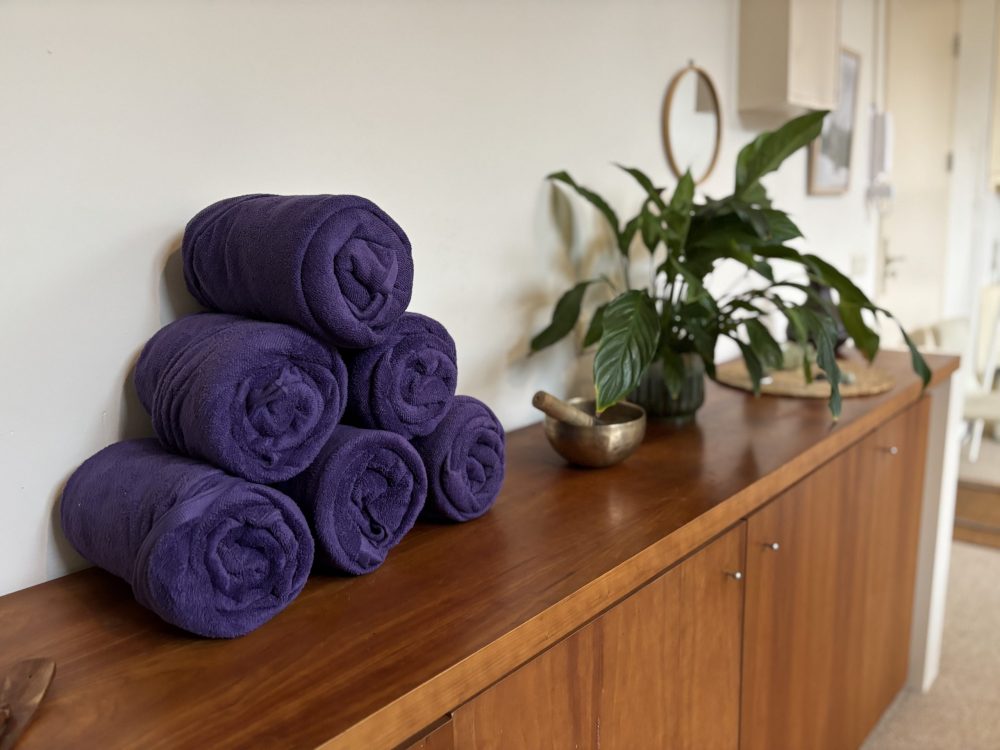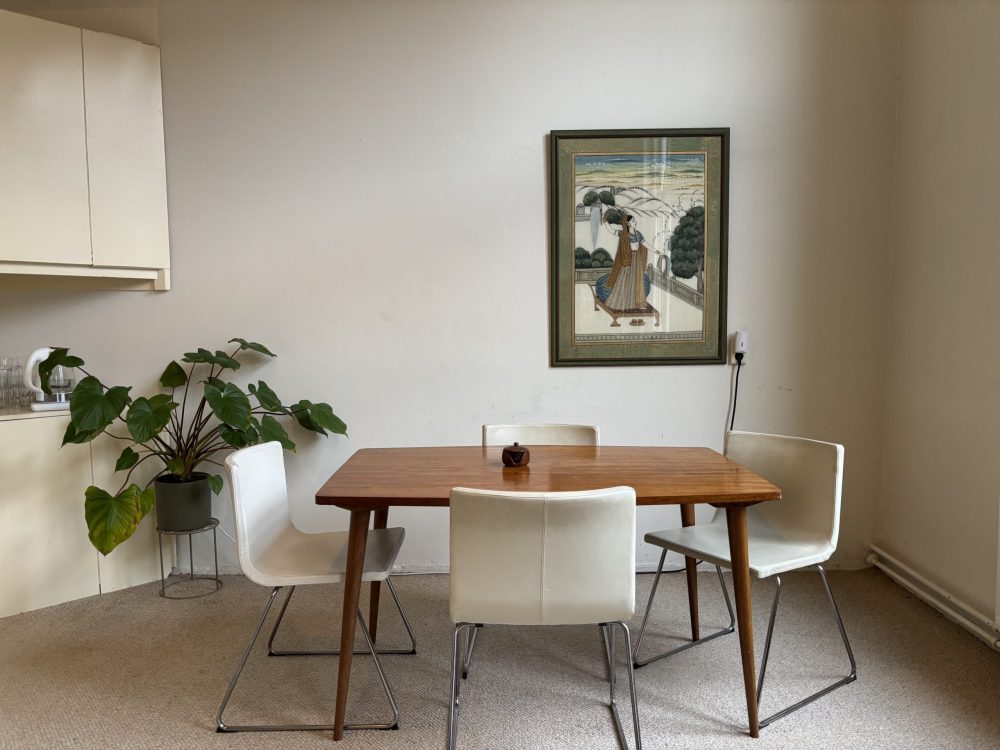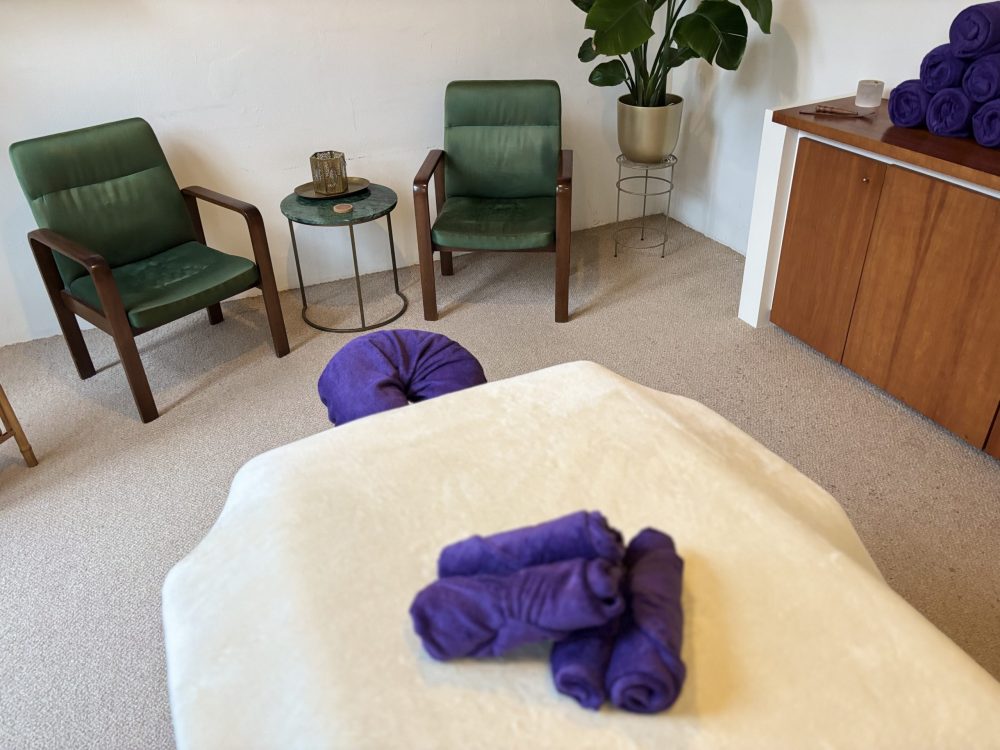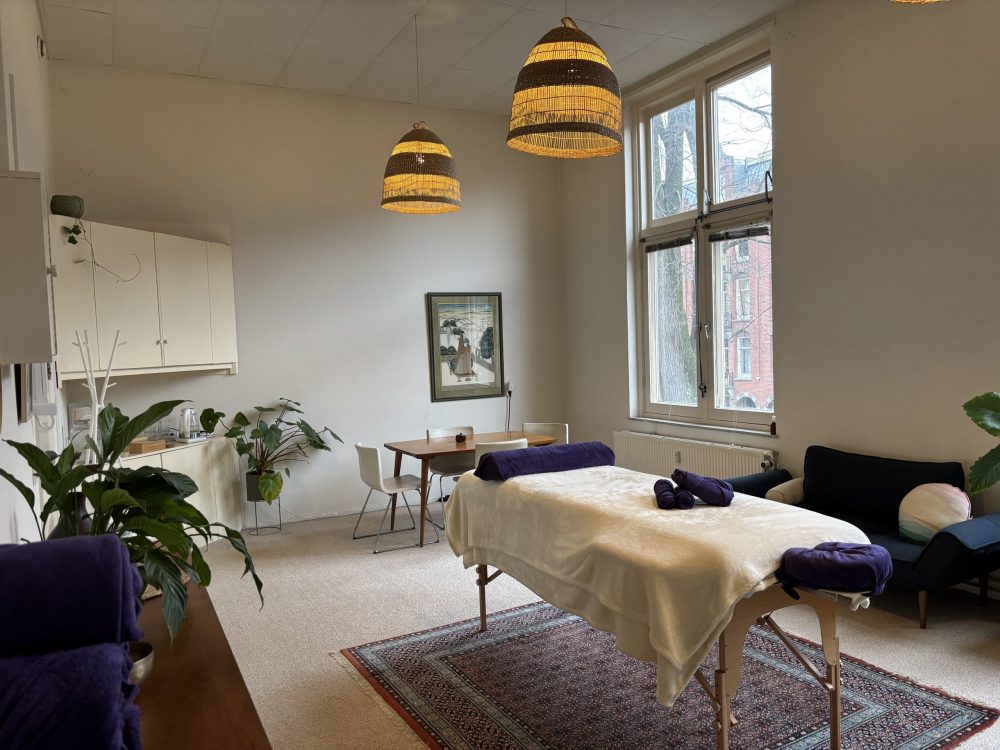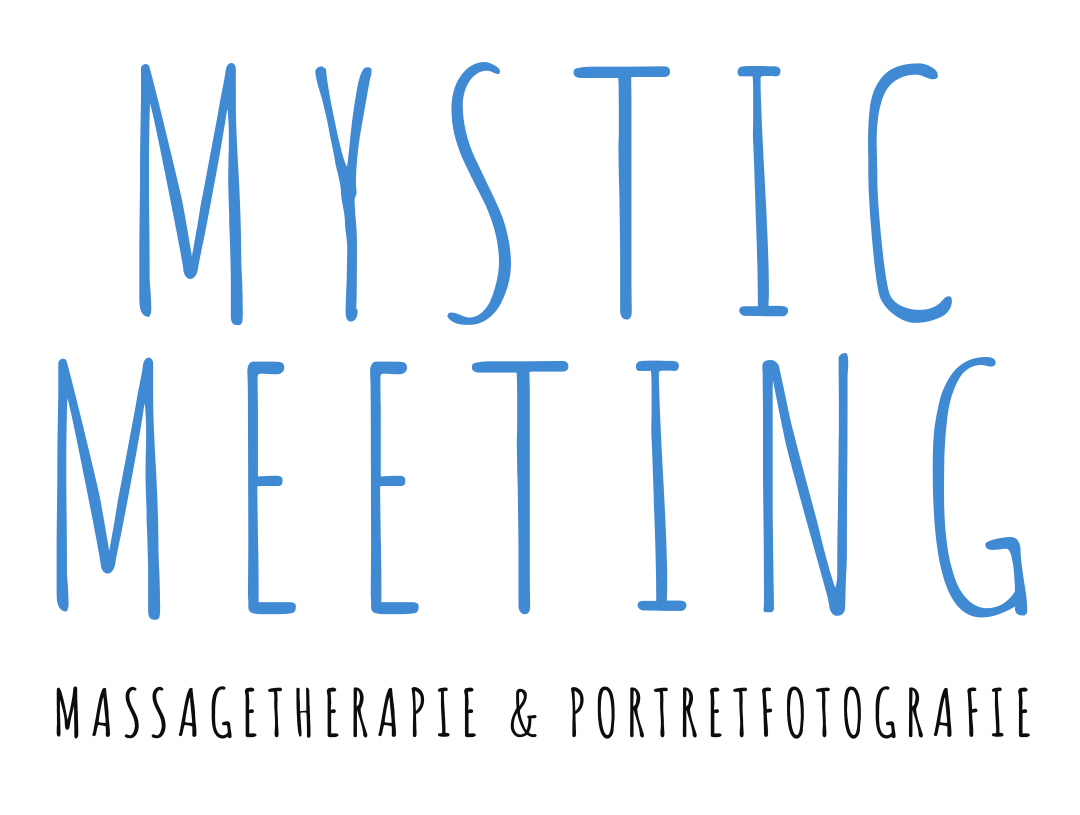For deep relaxation, a safe environment is essential. You’ve come to the right place.
As a massage therapist, I, Marloes Nierop, offer full body massages both relaxation and therapeutic.
These can be with or without oil, on a table or mat, in silence or with conversation, tailored to your needs.
THEMES
Before a massage, you can tell me if there are themes you would like to focus on.
Vitality
A boost for vitality
Massage therapy stimulates circulation and the lymphatic system, improving organ function and the elimination of waste products.
The nervous system switches to recovery mode, reducing the stress hormone cortisol and increasing resilience. Additionally, massages boost the production of serotonin and endorphins, which relieve pain and promote well-being.
Regular massages help your energy flow more freely and strengthen both body and mind. A simple, effective way to enhance your vitality.
Resilience
Stronger in Balance
Massage therapy is a holistic approach that brings body, mind, and emotions into balance. It promotes deep relaxation, helping you process external and internal stimuli more effectively and enhancing your ability to recover.
Additionally, massage strengthens your emotional resilience and mental well-being. This helps you better cope with stress and setbacks while boosting your self-confidence.
By receiving regular massages, you build a stronger foundation of resilience and balance in your daily life.
Intimacy
Connection Through Touch
Positive touch is a powerful tool against stress and anxiety and promotes emotional security.
During a massage, oxytocin is released, the hormone essential for growth, healing, and building intimate relationships.
Additionally, massage helps you feel more comfortable in your body, strengthening your self-worth and integrity. This also enhances your openness and confidence in the areas of intimacy, sensuality, and sexuality.
By increasing relaxation and body awareness, massage therapy creates space for deeper connection – with yourself and with others.
Transition
Support in Change
Massage therapy provides valuable support during physical and psychological transitions. By deepening your connection with your body, it helps with self-acceptance and embracing changes in body and identity.
In a safe, respectful space where your gender identity, orientation, and queerness are fully welcomed, you can explore yourself on a deeper level.
Massage invites relaxation, acknowledgment, and trust in your own process, allowing you to navigate your transition with more strength and gentleness.
Sensitivity
Balance in Stimuli
A sensitive nervous system makes you more intensely receptive to stimuli, which can lead to overstimulation and emotional intensity. Highly sensitive individuals process impressions deeply, which can be both enriching and overwhelming.
Massage therapy helps channel stimuli and find a balance between over- and understimulation. Through relaxation and grounding, a sense of safety emerges, allowing your sensitivity to feel less like a burden and more like a valuable quality that you can enjoy with greater ease and pleasure.
Pregnancy
For Mother and Baby
A pregnancy massage relieves pain, promotes recovery, and stimulates circulation, benefiting both you and your baby. In my practice, you can lie comfortably on your stomach thanks to a special massage table, or on your side with pillow support. You are welcome from 14 weeks of pregnancy until birth.
Massage helps with discomfort such as pelvic instability, fluid retention, back and shoulder pain, sleep problems, and emotional fluctuations.
Before Birth
If your due date has passed, a relaxation massage with acupressure can help induce labor. Acupressure stimulates the production of oxytocin – the hormone that triggers contractions – and enhances blood circulation. At the same time, it helps release endorphins and serotonin, reducing pain perception and making you feel calmer and better prepared.
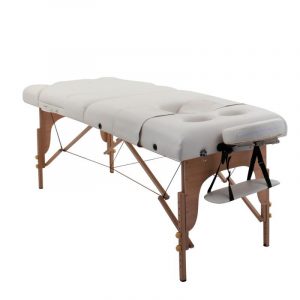
Postpartum
Recovery and Self-Care
After childbirth, your body needs time and support to recover. A massage helps relieve tension in the back, shoulders, and neck, supports hormonal balance, and reduces fatigue caused by disrupted sleep patterns. It is a valuable form of self-care during this intense period.
After a vaginal birth, you can receive a massage from 4 weeks postpartum, and after a cesarean section, after at least 6 weeks.
Emotional and Physical Recovery
A massage can also help with the processing of a miscarriage or abortion. It calms the nervous system, reduces feelings of emptiness, and helps restore trust in your body. Additionally, it supports hormonal balance and provides a moment of rest and comfort.
Grief
Period of Loss
Grief takes many forms – the loss of a loved one, a miscarriage, abortion, breakup, or other farewell can be emotionally, mentally, and physically overwhelming. Sadness, anger, guilt, fear, and difficulty concentrating are often accompanied by physical tensions, such as tight muscles, stomach pain, and reduced appetite.
Massage therapy helps to calm the nervous system, regulate emotions, and release tension. It offers comfort and supports you in consciously experiencing your feelings and blockages, allowing you to process your grief at your own pace.
A gentle, healing way to connect with yourself during a period of loss.
Physical complaints
Muscles & Joints
• Muscle pain and tension
• Stiff or cramped muscles
• Back, neck, and shoulder complaints
• RSI and muscle overuse
• Joint pain and stiffness
• Restless legs
• Tension due to poor posture
Stress & Emotional Balance
• Anxiety and restlessness
• Headaches and migraines
• Insomnia and (chronic) fatigue
• Burnout and overstimulation
• Restlessness
• Tension-related jaw pain
Circulation & Lymphatic System
• Poor circulation (cold hands/feet)
• Fluid retention and edema
• Cellulite and skin laxity
• Reduced lymphatic drainage
• Fatigue and low energy
• Support for the immune system
• Recovery support after illness or surgery
Digestion & Abdominal Complaints
• Bloating and digestive issues
• Abdominal pain and tension
• Support for bowel function
• Nausea and acid reflux
Hormonal & Female Complaints
• Menstrual pain and hormonal imbalance
• Pregnancy-related complaints
• Menopausal symptoms
Other
• Sleep problems and insomnia
• Chronic pain complaints
• Lack of energy and fatigue
• Dizziness and tinnitus
METHODS
The massages are a combination of different methods. You can share your preferences.
Acupressure
Acupressure is an ancient technique that stimulates or calms acupressure points, activating the body’s self-healing ability. This helps restore balance on a physical, mental, and emotional level.
The acupressure points are located on meridians – energy pathways that transport vital energy (Qi) throughout the body. When this flow is disrupted, imbalance can occur. Meridians correspond to major nerves and play an essential role in the body’s energy supply.
View on Health
According to Taoist philosophy, health is based on the free flow of Qi and a balance between body, mind, and soul. Organs, emotions, and thoughts are inextricably linked, just as humans are connected to their environment.
Traditional Chinese Medicine (TCM) offers a holistic approach to well-being and includes Qi Gong, breathing exercises, meditation, nutritional therapy, herbs, acupuncture, acupressure, massage techniques, and moxa.
Zen Shiatsu
Shiatsu shares the principles and meridians of acupressure but has its own approach with a broader focus on the meridians, rather than specific pressure points.
In the Zen Shiatsu method, gentle stretches and pressure are applied using fingers, thumbs, hands, elbows, and knees, which I incorporate as an additional technique during massages.
The primary intention of Shiatsu is to harmonize the energy flow in the body, but it can also be specifically applied to address complaints arising from imbalance, such as stress, muscle tension, and fatigue.
The Origin
Shiatsu is derived from anma, the traditional hand-healing method. “An” means pressure, and “ma” means stroking. Anma uses techniques based on the meridians of Eastern medicine.
The Zen aspect in Zen Shiatsu refers to the practitioner’s awareness and presence. The quality of touch is not only determined by technique but also by the inner attitude, calmness, and concentration during the massage.
Thai Massage
Thai massage combines acupressure, yoga, and reflexology to stimulate energy flow and relieve tension.
By applying targeted pressure with hands, feet, knees, and elbows on specific points, blockages are released, and balance in the body is restored.
Through passive stretching – similar to yoga – flexibility is increased, and energy circulation is improved.
Thai massage, or nuat phaen boran, is one of the oldest healing methods in the world and is an integral part of Thai medical and spiritual tradition. From a holistic perspective, body and mind are seen as one, where relaxation and energy balance go hand in hand.
Abdominal Massage
Abdominal massage, based on the Chi Nei Tsang method from Taoist Healing Arts, is a holistic therapy focused on activating the internal organs through deep, gentle pressure.
This stimulates blood circulation, improves the supply of oxygen and nutrients, and supports the removal of toxins through the lymphatic system.
The abdomen and pelvis are sensitive areas where not only physical tension but also unresolved emotions can be stored.
The safe and supportive environment in my practice helps to consciously experience this area, release tension, and find deep relaxation.
Foot Reflexology
Reflexology is based on the principle that the entire body is reflected in specific zones, such as the feet, hands, ears, or back.
By applying targeted pressure to these zones, bodily functions such as digestion, circulation, and lymphatic flow can be influenced.
I incorporate foot reflexology massage as part of my full-body massages, promoting both physical and mental relaxation.
Lymph Drainage
Manual lymphatic drainage is a gentle, rhythmic massage technique that stimulates the removal of fluid and waste through the lymphatic system. This natural defense system plays an essential role in immune protection, fluid balance, and fatty acid absorption.
By improving lymphatic circulation, this therapy supports better oxygenation of the skin, healthier digestion, detoxification of the body, and relief from swelling.
Lymphatic drainage thus aids in recovery and promotes a feeling of lightness and vitality.
Deep Tissue
This massage combines deep tissue and connective tissue massage for a profound effect on muscles and connective tissue.
During the connective tissue massage, the skin is lifted and rolled using specialized techniques, stimulating blood circulation and firming the skin. Deep tissue massage focuses on the deeper muscle layers and connective tissues, helping to release built-up tension and blockages.
By combining these techniques, not only is the skin’s structure improved, but deep muscle tension is also relieved. This promotes greater flexibility, relaxation, and a faster recovery for the body.
Pulses
Holistic Pulsing is a gentle and rhythmic massage technique that brings the body into a natural, rocking motion. These pulsating movements help to release tension, stimulate circulation, and calm the nervous system.
The method works deeply on both a physical and emotional level. It invites the body to feel safe and supported, allowing blockages and stored emotions to be naturally released.
It promotes deep relaxation, energy restoration, and a feeling of lightness in the body.
If desired, you can keep your clothes on during the session (loose clothing recommended).
Tongue & Pulse Diagnosis
Tongue and pulse diagnosis are ancient techniques that provide insight into your physical and emotional balance.
Imbalances in the body are reflected in the skin, hair, nails, voice, organs, meridians, pulse pressure, and the color and shape of the tongue.
With tongue diagnosis, I identify or rule out patterns, helping to distinguish overlapping symptoms.
Pulse diagnosis provides insight into the energy level of each organ by assessing the tension, width, depth, strength, and rhythm of blood flow and heartbeat.
I use these techniques as a complement to determine where more balance is needed in your body.
MYSTICS
Optionally, I offer additional methods, especially during longer massage therapy treatments.
Focusing
Focusing is a psychotherapeutic technique in which you attentively listen to the subtle signals of your body. Combined with massage, this can have a profound self-reflective effect.
By becoming aware of physical sensations, feelings, and thoughts, valuable information emerges that contributes to both psychological and physical healing.
This process helps to release emotions, accept your body, and experience more balance in daily life.
During the massage, I invite you to be present in your body with loving, non-judgmental awareness, exactly as it feels in that moment.
Introspection
For those who wish to create more awareness and insight, I optionally offer a guided introspection session of 30 minutes before the massage.
Introspection is a form of self-reflection, in which you explore your thoughts, feelings, patterns, and desires. Through conversation, relaxation exercises, meditation, and visualization, I help you open relevant themes and mentally unwind.
The deep relaxation of the subsequent massage enhances access to your subconscious, often leading to new insights and more conscious choices in your daily life.
Inner Landscape
During massage therapy, you strengthen the connection with your body and learn to better understand your inner needs, desires, and boundaries.
This increases your freedom of movement within your ‘inner landscape,’ which can help balance aspects such as giving and receiving, resilience and decisiveness, depth and lightness.
During massages, we can deepen awareness on:
Balance between giving and receiving (inner and outer).
Connection between unity consciousness and personal strength (above and below).
Harmony between feminine and masculine energy (left and right).
By integrating these polarities, you create equilibrium and resilience, both within yourself and in your interactions with the world around you.
Silence Therapy
Silence is more than just the absence of sound or a pause from external stimuli.
When you relax in silence during a massage, your body can better focus on regeneration, strengthening your immune system. It relaxes the muscles, lowers stress hormones, and improves blood circulation.
The calming experience also creates space for self-reflection. Without distractions, your attention turns inward, making your thoughts, feelings, and desires clearer.
Mindfulness and meditation, which also embrace silence, have been proven effective in reducing mental health issues, such as burnout, depression, and anxiety disorders. They also enhance cognitive functions such as concentration and memory.
Additionally, silence stimulates intuition and creativity, as it creates room for new insights and ideas. It offers a ‘blank canvas’ for the mind.
Creative Expression
To deepen massage therapy, I offer, if desired and entirely optional, creative invitations. Through preparatory or evaluative home assignments, I provide a stimulating environment tailored to your preferences and possibilities.
You can (learn to) use your creative potential to process stimuli, both internal and external, and to align with your inner compass.
Creation and imagination are powerful tools for exploring questions, discovering desires, generating original ideas, and thinking outside the box.
By exploring different forms of expression, you also learn to let go of perfectionism and fear of failure, while appreciating the process itself and creating space to further develop your interests and talents.
FAQ
Relaxation or complaint treatment?
After booking a massage, you will receive a short questionnaire by email. In this, you can indicate whether there is a theme you would like to focus on (or not) and which methods you prefer.
Would you like an accessible self-care session or an introductory massage? Then we will focus on a relaxation massage.
Or we can address specific complaints and/or themes.
If desired, we can then explore your health and needs in more depth and create a plan together for follow-up sessions.
Which duration should I choose?
You can choose from different massage durations, depending on your preferences and needs.
Would you like to focus on specific themes, discuss a particular concern, or start a longer process? Then an initial session of at least 70 minutes is recommended, allowing ample time for both introduction and massage.
Who is it for?
The massages and massage therapy are intended for women, transgender, non-binary individuals, men, and anyone in need of relaxation and recovery.
How do I prepare?
After booking a massage, you will receive a short questionnaire by email. In this form, you can indicate which themes are important to you and which methods you prefer.
It is important to inform me in advance about any medical conditions, medication use, recent or upcoming surgeries, or pregnancy.
Preparation: It is recommended to avoid alcohol for at least 48 hours before the session and to refrain from drinking coffee a few hours prior to the massage. For an abdominal massage, it is best not to eat at least one hour beforehand.
After the massage: Drink extra water for 48 hours. This helps replenish fluids, as the massage stimulates circulation and accelerates water elimination. I will also remind you of this immediately after the session.
Clothes on or off?
During the massage, warm oil can be applied directly to the skin, while the rest of your body remains covered with towels.
You can use a screen for full privacy while changing.
You may also choose to wear loose clothing—for added comfort, skin sensitivity, or if you feel more at ease with more coverage.
We will discuss this together before each massage, and I will advise you based on your needs.
Massage table or mat?
The choice between a massage table or a mat on the floor depends on your preferences and needs.
Massage table: Provides more support and comfort, ideal for relaxation and targeted treatments with oil.
Mat on the floor: Allows for greater freedom of movement and deeper pressure, also useful for dynamic techniques such as stretching and acupressure. (massage on the mat will be available from April 2025)
Together, we will determine what suits you best.
What do I feel during acupressure?
During acupressure, you may experience different sensations depending on the pressure technique and your body’s response.
With gentle, sustained pressure (sedating): You may feel a deep sense of relaxation, as if tension is slowly dissolving. This helps release blockages and reduce stress. Sometimes, you may feel a warm or tingling sensation in the treated area or further along the meridian.
With firm, short-term pressure or repeated stimulation (tonifying): This can have an activating effect. You might experience a slight electric tingling, pressure, or even a pleasant pain that stimulates energy and circulation. This is particularly helpful for fatigue or low energy.
Everyone experiences acupressure differently, and sensations may vary depending on the treatment and body area. The most important thing is to communicate what feels comfortable so we can adjust the pressure to your needs.
When not to get a massage
General Advice
If you are ill, it is advisable to consult your doctor first. Listen carefully to your body and inform me of any complaints in advance. By discussing and aligning expectations, you can fully enjoy a relaxing and responsible treatment.
When to Avoid a Massage?
There are situations where a massage should not be given. These so-called contraindications can be absolute (no massage possible) or relative (certain areas are avoided). If you have an absolute contraindication, it is advisable to consult your doctor before considering a massage:
Fever, flu, or severe cold → Massage stimulates circulation and may worsen symptoms.
Contagious skin conditions (such as fungal infections, boils, eczema with open wounds) → To prevent the spread of infection.
Heart conditions (such as a recent heart attack, severe arrhythmias) → Always consult your doctor before considering a massage.
Thrombosis or increased risk of blood clots → Massage may dislodge a clot, creating a dangerous situation.
Severe vascular disorders (such as aneurysm, deep vein thrombosis) → This can increase the risk of bleeding or blockages.
Bone fractures, severe bruises, or open wounds → Massage may disrupt the healing process.
Cancer (without consulting a doctor) → Specialized massage is required for cancer patients. Consult your treating physician first.
Acute inflammations in the body → Massage may worsen the infection by stimulating circulation.
When to Avoid Massage in Specific Areas?
With relative contraindications, massage is still possible but with adjustments. In some cases, certain body parts should be avoided, or a milder massage technique should be used:
Varicose veins → Avoid firm pressure on the legs, but a gentle massage on other areas may be possible.
Pregnancy → Special techniques and positions are needed, especially in the first trimester.
High or low blood pressure → Massage can affect blood pressure, so light techniques and regular monitoring are important.
Chronic conditions such as rheumatism, fibromyalgia, or osteoporosis → An adapted massage may provide relief, but firm pressure should be avoided.
Fresh surgical scars or recent surgeries → Massage around the area should be avoided to support the healing process.
Cancerous tumors (after consultation with a doctor) → If permitted, a gentle massage may provide relief.
Inflammation in joints or muscles → Massage on the inflamed area may worsen symptoms, but other body parts can still be treated.
Medication use (such as blood thinners, painkillers, or anti-inflammatory drugs) → Consult in advance, as massage may influence medication effects.
Payment
Payment
The rates and options for massage durations can be found in the booking calendar at the bottom right of the screen.
Preferably, you can pay online via iDEAL, Apple Pay, or credit card. This can be done immediately after booking through the online booking system.
An invoice is available upon request and can be sent to you via email.
If online payment is not possible, you can also pay immediately after the massage via a payment link or with exact cash.
Referral
My services fall under uninsured care, are inclusive of VAT, and are not covered by health insurers. This comes with several benefits:
– No referral from your GP is required.
– No waiting lists
– No diagnosis will be added to your medical record
– Your deductible will not be used
– I can offer more personalized treatment as I am less bound by protocols and administrative burdens.
– Employers may be willing to (partially) cover the costs. Discuss this with your organization if you experience stress-related complaints.
Accessibility
The practice is located on the 2nd floor of Domselaerstraat 30 in Amsterdam.
Treatments take place in a practice space with changing facilities. Unfortunately, there is no elevator available.
Public Transport: The practice is easily accessible by public transport. Amsterdam Muiderpoort train station is approximately a 3-minute walk away. The nearest stops are tram stop Wijttenbachstraat/Linnaeusstraat (tram lines 3 and 19) and bus stop Linnaeusstraat/Wijttenbachstraat (bus line 37). From these stops, it is about a 2-minute walk to the practice.
By Car: Domselaerstraat is located in the Oost district and can be reached via the A10 ring road, exit S113 (Watergraafsmeer).
Parking: Paid street parking applies in the immediate vicinity of the practice. Rates and times may vary; please check local parking meters for up-to-date information. For a more affordable option, you might consider parking at a P+R location and taking public transport for the final stretch.
By Bike: The practice is easily accessible by bike. There are ample bicycle parking options on the street or in nearby bike parking facilities.
Do you have another question or specific request? Feel free to reach out to me for personalized options.
